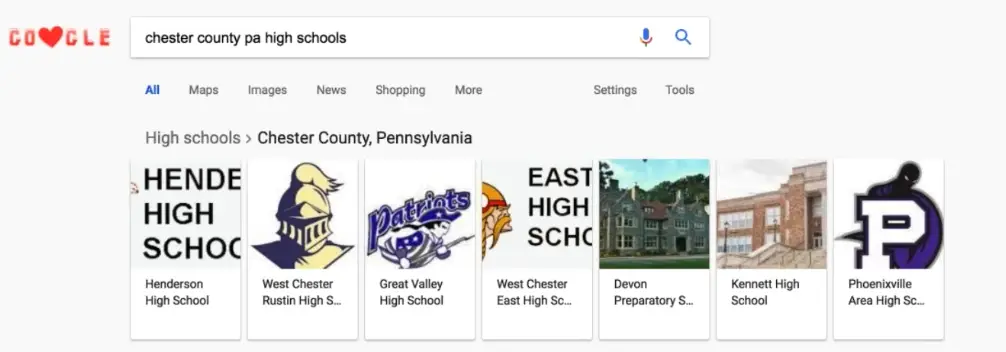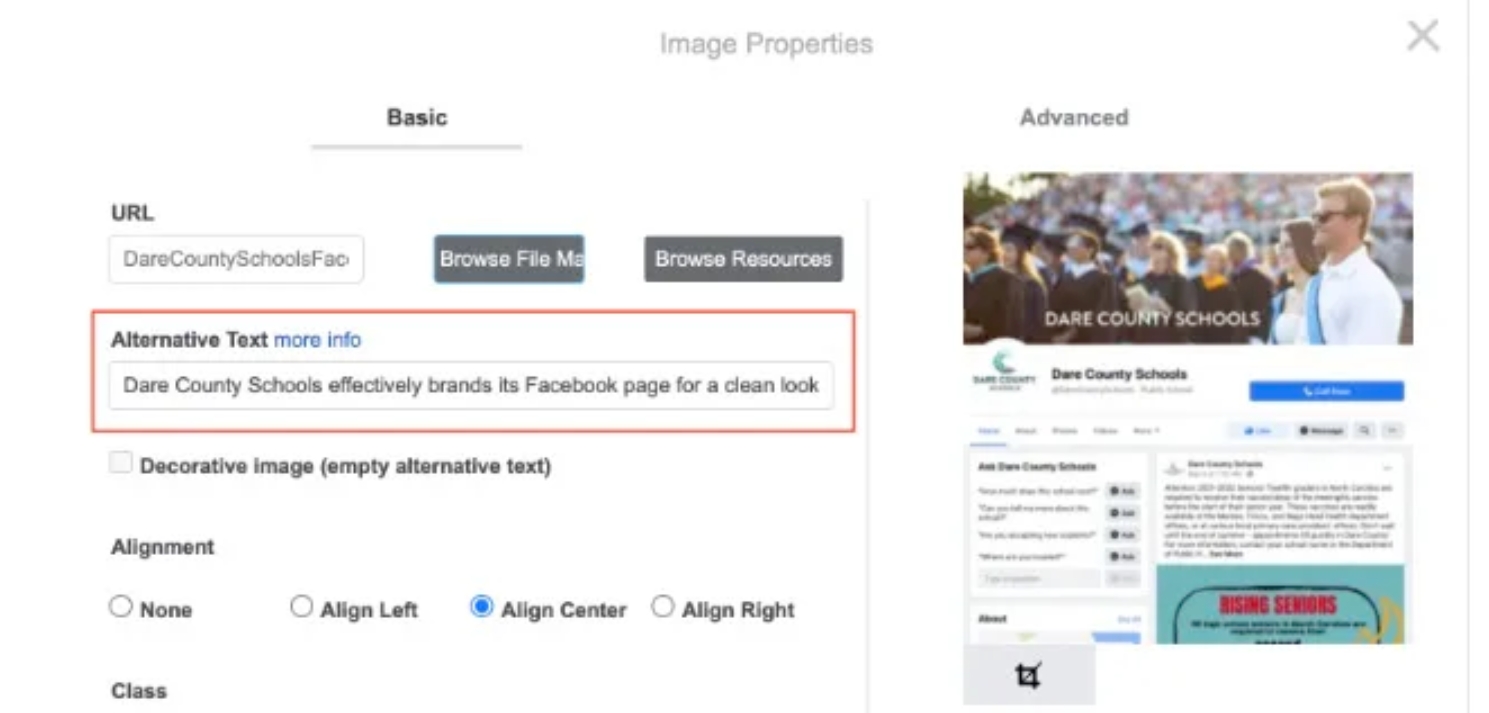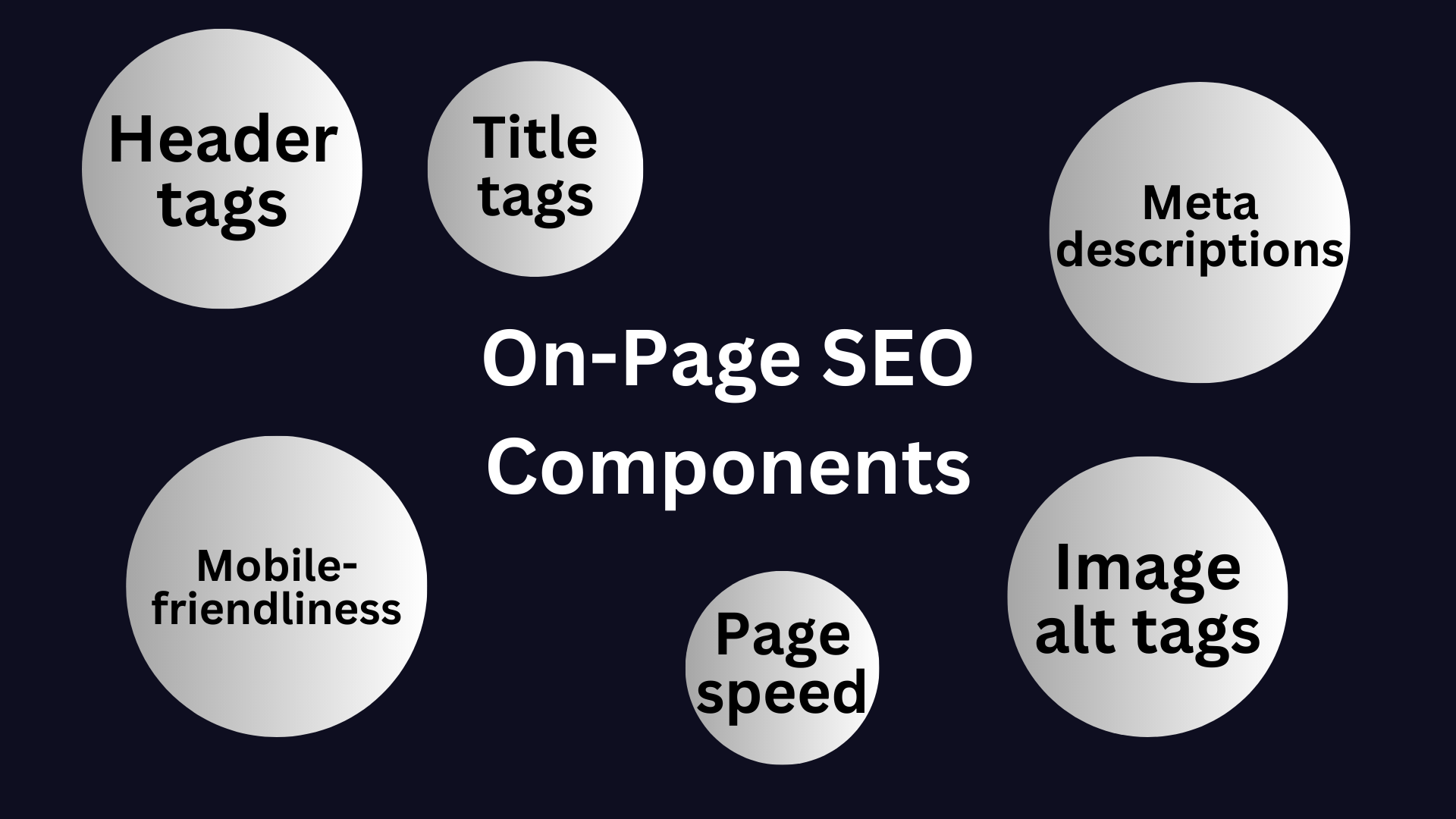It is widely acknowledged that a well-planned search engine optimization (SEO) approach is crucial for private schools aiming to reach prospective and existing families. However, one might wonder where to begin and what the ongoing maintenance entails.
SEO isn’t a one-time operation that guarantees results indefinitely. Given that algorithms are continually evolving and the bots scanning your site are becoming more sophisticated, it’s critical to frequently review and adhere to best practices, while also updating your website as necessary over time. Additionally, it’s vital to note that organic search typically accounts for 30-60% of your traffic, indicating that your community’s discovery of you cannot be entirely dependent on alternative channels or word-of-mouth.
In this article, you’ll find these SEO strategies for private schools:
- Branded Searches
- Unbranded Searches
- Optimizing for Branded and Unbranded Searches
- Getting Your Site to Rank Higher in Your Local Area
- Mastering On-Page SEO For Private Schools
- Boosting Visibility Through Authority
- Strategic Keyword Integration
- Tracking and Analyzing SEO Campaigns
Let’s kick off getting more students by digging into best SEO strategies for private schools.
Strategy 1: Branded Searches
Searches that involve your school or district’s name combined with a specific subject or identifier, such as “[School Name] scholarships” or “[School Name] athletics,” are referred to as branded search terms. These queries are likely to lead users to specific pages within your website rather than your homepage.

This is due to search engines’ diligent examination of your site to provide the most pertinent information to users in a single click.
Branded Search Implications
When an individual conducts a branded search, it implies they already have knowledge about your institution. At this stage, you’re not vying for ranking positions. Hence, it’s crucial to assess your landing pages for a positive user experience since these clicks are assured.
Note that branded searches often lead users to specific pages of your website. Therefore, if these pages are cluttered, perplexing, or unorganized, retaining new website visitors might pose a challenge.
Strategy 2: Unbranded Searches
Unbranded searches pose the most direct competition for schools. These are generic queries focusing on a specific interest, location, or aim such as:
- Best boarding schools in Florida
- Best public schools in New England
- All-girls schools in Boston
- International schools in Milan
- Private schools near me
Unbranded Search Implications
Most search queries start with an unbranded term. This suggests that the majority of potential families are seeking a solution that suits their needs, and they rely on search engines to guide them.

This underscores the significance of website optimization for search, ensuring visibility in searches most relevant to your school. Apart from the significant traffic from unbranded searches, over 60% of all organic clicks are directed to the top three search results.
Strategy 3: Optimizing for Branded and Unbranded Searches
The primary aim of SEO is to attract a greater number of relevant visitors to your website by:
- Ensuring your website appears on the first page of search results for relevant keywords related to your school; and
- Providing pertinent internal pages for these searches.
Although effective SEO strategies require substantial time and commitment, there are several simple strategies you can immediately apply to improve your website’s search optimization.
Step 1: Initiate Basic Keyword Research
Several keyword research tools are available, including Ubersuggest, Semrush, Moz, and others. These tools are ideal for determining the average monthly search volume for specific keywords, or for discovering similar search terms you may not have thought of.
For instance, suppose I am employed at a private school in Texas and use the free version of Ubersuggest to research the keyword “best private schools in Texas”. I would then observe the following:
- Keyword search volume results
- Other suggested phrases
- Average search volume of those phrases
- The competition level for these terms
While keywords with high search volumes, such as “best Texas private schools” with 590 monthly searches, may seem attractive, securing a top ranking for these terms is challenging. Conversely, the keyword “top Texas private schools”, with a more reasonable 170 monthly searches and an organic Search Difficulty (SD) of 8, is an excellent choice to include on my website due to its relevance and low competition.
Initial keyword research is crucial to formulate an effective SEO strategy and identify feasible ranking terms.

However, if you’re unsure where to begin, free search engine usage can help. Begin typing a relevant phrase into Google, and allow the search engine to suggest other terms, giving you a broad perspective on popular terms.
Step 2: Embed These Keywords Into Your Meta Content
Many schools simply use their name or their name with the page name (like “Home”) as their title tags, which appear on search engine results pages. While this may identify who you are and the page’s location, it’s not beneficial for your SEO.
Revisit the keywords generated in Step 1, and combine the most applicable term with your school’s name to form an ideal page title tag.

For your homepage, a generic term is preferable, while specific program or accolade pages can include more detailed title tags.
Besides your title tag, the meta description is crucial, as it gives a brief summary of your page and aids search engines in matching your content to user queries. You have a limit of 160 characters, providing an opportunity to detail your offerings.
Step 3: Integrate These Keywords Into Your On-Page Content
While on-page SEO can be labor-intensive, a quick action is to identify your top pages and weave in your keyword terms where appropriate. Examine your page titles, headers, and paragraph content for instances of your school’s name, the type of school, and its location. If not present, adding these phrases can significantly enhance your SEO.
Step 4: Assign Custom Alt Text to All Images on Your Website
Alternative (alt) text is the backend content linked to your website’s images. It’s crucial for accessibility, as screen readers use it to inform users about an image’s content. Besides this primary purpose, alt text can also boost search rankings. You can craft a custom description for each image that includes key search terms you aim to rank for while accurately representing the image.

Strategy 4: Getting Your Site to Rank Higher in Your Local Area
When it comes to search engine optimization (SEO) for educational entities, it is imperative to focus on local search visibility.
Prospective students and their families predominantly look for educational institutions within their vicinity. Thus, for attracting the right demographic, streamlining local SEO is of paramount importance.
One effective strategy for this involves claiming and refining your institution’s Google My Business (GMB) profile. GMB, a complimentary tool from Google, allows enterprises to manage their online presence seamlessly.

By staking a claim and enhancing your GMB profile, you can dispense vital details about your institution like its location, contact details, and operating hours. Uploading photos and interacting with reviews are also beneficial actions that can foster trust with potential students and their kin.
6 Steps to Claim & Refine Your Google My Business Profile
To improve your institution’s local search engine rankings, claiming and refining your GMB profile is an essential step. Here’s a step-by-step guide on how to do it:
- Stake Your Claim: The initial step is to claim your institution’s GMB profile. Visit google.com/business and sign in to your Google account. Once logged in, select the “Manage Now” button to start claiming your profile.
- Authenticate your Profile: After staking your claim, you will need to authenticate it to prove your ownership. Google will dispatch a verification code to your institution’s physical address. Enter the code in your GMB account for authenticating your profile.
- Complete your Profile: After authentication, you can proceed to complete your institution’s GMB profile. This involves inputting your institution’s name, address, contact number, website URL, and working hours. Make sure to include relevant keywords in your business description to enhance your local search visibility. You’ve now set up your Google business profile.
- Upload Pictures: Visual content makes your GMB profile more appealing to potential students and their families. Ensure you upload premium images of your campus, classrooms, and co-curricular activities to depict the uniqueness of your institution.
- Solicit Reviews: Positive reviews enhance trust among potential students and their kin. Request current students, parents, and staff to leave reviews on your GMB profile. Reacting to both positive and negative reviews also helps establish trust and engage users.
- Regular Monitoring and Updates: Regular monitoring and updating your GMB profile is crucial. Keep your institution’s data accurate and up-to-date, and respond promptly to inquiries or queries.
Maintain Consistency Across the Internet
In the realm of local search, consistency is key. Ensure your NAP (Name, Address, Phone number) data is consistent across all digital platforms, including your institution’s website and local directories. Such consistency enables search engines to validate your institution’s data and boosts your local search visibility.
When other websites mention your institution’s data, it signals to search engines that your institution is a valid enterprise, thereby improving your rankings. Ensure all your data is accurate across all websites for the best results.
Strategy 5: Mastering On-Page SEO For Private Schools
On-page SEO is a vital aspect of boosting online visibility for private schools, and it entails refining your website’s content and HTML source code to enhance its position on search engine results pages (SERPs).

Here are the 6 crucial components of on-page SEO that deserve your attention:
- Title tags: These are the clickable headlines in search engine results, they should be brief, accurately portray the content of your page, and incorporate your chosen keywords.
- Meta descriptions: These provide a summary of your page’s content and appear beneath the title tag in search engine results. They should integrate your selected keywords and a call to action.
- Header tags: These elements structure your page’s content, including H1, H2, and H3. They assist search engines in comprehending the hierarchy of your content and enhance its readability for visitors.
- Image alt tags: These descriptions of the images on your website are read by screen readers for visually impaired users. Including your selected keywords in these tags can also enhance your website’s SEO.
- Mobile-friendliness: Given the high number of users accessing the internet on mobile devices, it’s essential that your website is mobile-friendly. Google gives precedence to mobile-friendly sites in its search results.
- Page speed: The speed of your website’s loading time is a crucial factor in on-page SEO. Slow loading times can result in a subpar user experience and negatively impact your website’s SEO.
By fine-tuning these key components of on-page SEO, you can boost your website’s position on SERPs and attract a larger number of prospective students to your private school.
Strategy 6: Linkbuilding — Boosting Visibility Through Authority
Creating top-tier backlinks is a fundamental strategy to amplify a website’s search engine ranking and digital presence. When your school’s website is linked by other respected online platforms, it signals to search engines that your site is reliable and valuable. Consequently, it enhances your website’s credibility, elevating its likelihood of obtaining a superior position in search engine results pages (SERPs).
Various tactics are available for private schools to secure high-caliber backlinks:
Collaborations with Community Organizations
Working in concert with local enterprises, charities, and educational institutions can forge relationships and produce backlinks. For instance, consider sponsoring a community event, contributing to a local charity, or offering internships to students.
This video shows how 6 Connecticut school districts are taking unique approaches to family, school and community partnerships in order to increase student engagement and improve student outcomes.
Guest Blogging
Submitting guest blogs for other platforms in your field or niche can consolidate your school’s reputation and garner backlinks. Initiate contact with websites that align with your school and propose to craft a top-tier article that delivers valuable insights to their audience.
Public Relations Outreach
Producing content that makes headlines and connecting with journalists, bloggers, and influencers can win backlinks and media exposure. This could encompass press releases, news, or narratives about remarkable accomplishments or happenings at your school.
Social networking sites such as Facebook, Twitter, and LinkedIn can serve as influential means for broadcasting content and generating backlinks. By disseminating blog posts, infographics, videos, and other types of content on social media, you can engage a broader audience and inspire them to link to your content.
Moreover, active social media presence can hint to search engines that your website is popular and relevant, thereby elevating your search engine ranking. You can also interact with other users and influencers in your field to establish relationships and gain backlinks.
In the video below, Ysa Chandna explains the differences between public relations, advertising, and marketing.
Strategy 7: Strategic Keyword Integration
To effectively integrate keywords in your website’s content and meta tags, consider the following guidelines:
- Incorporate keywords in your website content: After identifying pertinent keywords, weave them naturally into your website’s content. For instance, include them in your headlines, subheadings, and main text.
- Utilize variations of your keywords: Avoid monotony in your content by not reiterating the same keyword over and over. Instead, use different forms and synonyms of your primary keywords to keep your content versatile and captivating.
- Fine-tune your meta tags: Your meta tags, such as title tags and meta descriptions, should contain your target keywords. Ensure your title tag is succinct and aptly mirrors the content of your webpage. Your meta description ought to contain your target keywords along with an enticing call to action.
- Avoid keyword overuse: Excessive use of keywords, often referred to as “keyword stuffing,” can negatively impact your website’s SEO. Hence, ensure keywords are used sparingly and purposefully to avoid penalties from search engines.
Strategy 8: Tracking and Analyzing SEO Campaigns
Monitoring and evaluating the outcomes of SEO initiatives is crucial for private educational institutions to ascertain if their endeavors are meeting their objectives. Without accurate monitoring and assessment, it becomes challenging to determine the efficacy of the SEO tactics being employed or whether they require modifications.
By scrutinizing and assessing vital metrics, educational institutions can make decisions grounded in data and refine their SEO initiatives to accomplish improved outcomes.
Private schools aiming to monitor and evaluate the effectiveness of their SEO should concentrate on particular key performance indicators (KPIs) that aid in quantifying the success of their SEO plans.
Some of the most critical KPIs to monitor are:
- Organic Traffic: This gauges the influx of visitors to a website via search engines. The main aim of SEO is to boost organic traffic.
- Keyword Rankings: It’s crucial to monitor keyword rankings to assess how the website fares for distinct search inquiries. The better the website’s rank for pertinent keywords, the higher the probability of garnering organic traffic. You do not need to use paid, complicated position tracking services for new projects, you can get by with free or freemium plans. In JaySearch’s review, you can find 11 such tools.
- Conversion Rate: The conversion rate quantifies the proportion of website visitors who carry out a specific action, such as completing a contact form or registering for a school tour. Monitoring conversion rates can aid schools in comprehending how effectively their website transforms visitors into potential leads.
- Backlinks: Monitoring the count and quality of backlinks leading to the school’s website is critical as top-notch backlinks can enhance the website’s authority and search engine ranks.
- Bounce Rate: The bounce rate quantifies the proportion of visitors who exit a website after viewing just one page. An elevated bounce rate could indicate that the website’s content or user experience requires enhancement.
This video from the Analytics Academy demonstrates how how to track a marketing campaign in Google Analytics.
Keep Learning
- Local SEO Schema: A Complete Guide To Local Markup & Rich Results
- How to Optimize Your Website for Mobile Page Speed
Main Point
In an environment where organic search is the starting point for most decisions, it’s crucial for any educational institution or district to implement Search Engine Optimization (SEO) strategies. SEO plays a significant role, from drawing the attention of potential families to remaining highly visible in the search results for existing ones. While the determination of page rankings involves a myriad of complex factors, initiating with basic keyword research and enhancing your website content can significantly boost your visibility in the most relevant searches.
